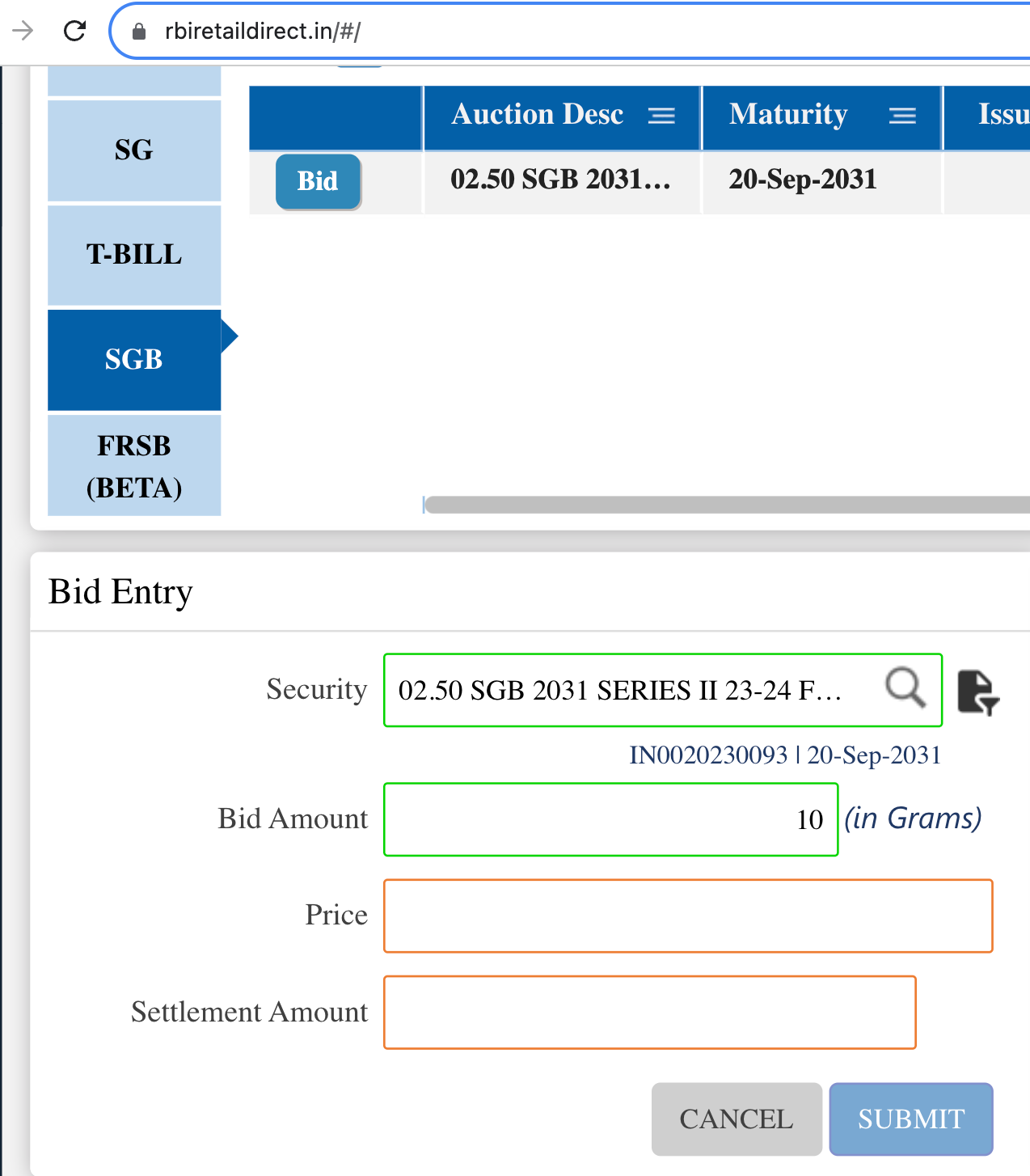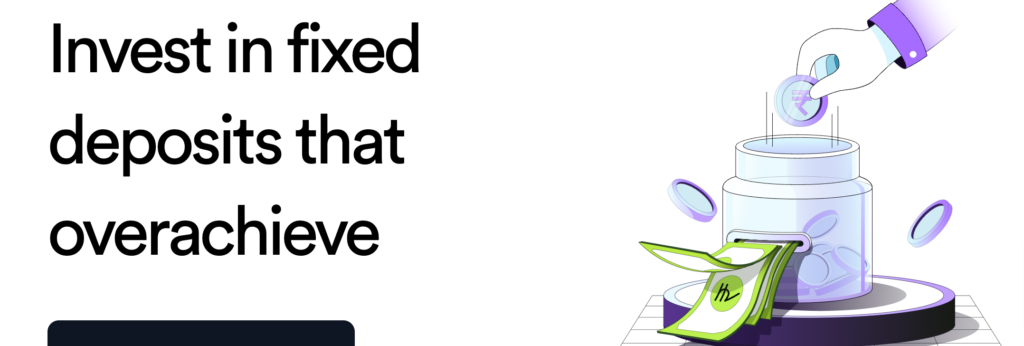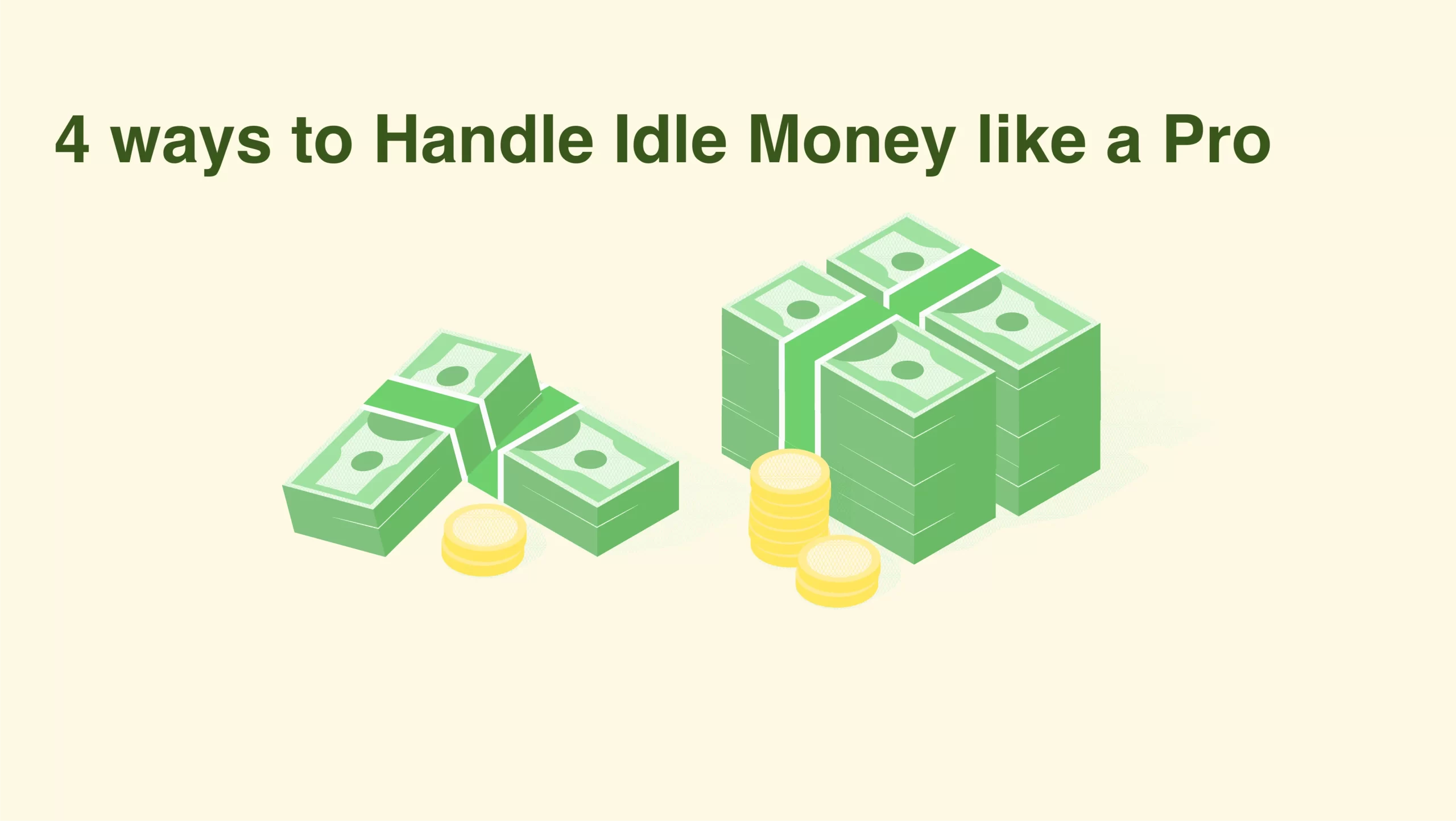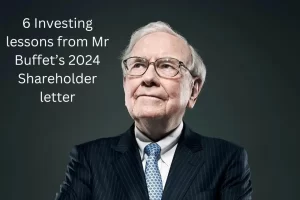What is the fuss?
We all, at some point of time, have idle money at hand. There is no vacation planned, no gadget we want to buy, no wardrobe refresh to be done. And more importantly, the stock market is too expensive to invest. What do you do as a retail investor in this situation? Well, you wait it out, till market corrects, and gives you an opportunity to invest.
Now, waiting it out is a difficult game to excel at. Most of us are not able to do it well. With idle money at hand, you just might upgrade your jogging shoes, buy your loved ones an expensive gift, or — just spend. The end result is, when the market corrects, you do not have a war chest to deploy.
This is the point I address in this post. How to handle your idle money like a pro, and build that investment war chest. Lets get started.
What is Idle Money?
Money, lying idle, is idle money. Money that you do not need at the moment, and not in the next 30 days, is idle money. Some sources of idle money, dependent on the type of income sources you might have, are below.
Salaried Person’s Idle Money
Lets say you get a certain amount of salary every month. 60% of the salary you spend in household expense (rent, bills, food, weekends etc.). Remaining 20% you invest in mutual funds in the form of SIPs. Remaining 20% you invest individually in stocks. Or maybe not even invest and let it lie in your savings bank account. This remaining 20% which you park in savings bank account, or are not investing because the stock market is too expensive, is idle money.
Do note that idle money is over and above your emergency cash reserve. Emergencey cash is at least 6 months’ worth of lifestyle expenses stashed away to take care of any emergencies such as job loss, medical emergency etc.
Second form of idle money for a salaried person is a one-time additional pay. This additional pay can be in the form of annual bonus, Diwali bonus, or joining bonus (given when joining a new company) etc. This one-time money is kind of a lump-sum amount, which is not planned to be spent immediately, and is also not needed to take care of everyday expenses.
Self-Employed / Business Man’s Idle Money
If you are self-employed, such as a freelancer, or a business person, a common source of idle money is lump-sum payment made by clients on project completion, or advances received on a signing a new project contract. Sometimes, a performance or delivery timeline based additional bonuses are also paid out.
There can be more sources of idle income. You might one day wake up, and realise that the Fixed Deposit you had made three years ago has matured, and deposited back into your bank account. Sometimes the dividend from a stock you invested in might be an un-expected large source of income which comes and sits in your bank account.
If you are a thrifty spender like me, every 3–4 months you will find a decent chunk of money accumulating in your savings bank account. Yes, this accumulated money, that you do not need in the next 30 days or so, is also Idle Money.
Why is Idle Money not good?
Lets see some reasons why ‘Idle money is not Ideal!’.
Reason 1: Money should always be working
Money should always work, to create more money. Idle money does not work. It is idle, it is lazy. It lies in the safe corner in your wallet, or in your savings bank account. Idle money erodes your wealth over time. Not good, right?
Inflation depreciates the value of money over time. Idle money falls prey to this depreciation. Even with a savings bank account, you get 3–4% interest rate, which is lower than the 5-6% inflation we see in India.
As Robert Kiyosaki says in his bestseller book, ‘Rich Dad, Poor Dad’, one should always make their money work hard.

As an investor, you should try to maximise the returns on the money you earn.
Reason 2: Impulse to use Idle Money to fulfil your wants
An intelligent investor knows how to live within his means. He/she knows the different between needs and wants. Your income, over and above your needs, should be invested, at least till the time you are comfortably financially independent.
But what happens when you have money lying around? You feel the impulse to buy something which is a want. Maybe the upgraded smart phone, a new gadget, or upgrade your gym-wear.

Not saying that buying expensive and good quality products are bad, but going beyond your needs is not recommended either. With money lying around, one is more tempted to spend it.
Where should you NOT invest your Idle money?
You should not put your idle money in a savings bank account.
Yes, you need to have some cash to maintain your living expenses. But above this expense, avoid saving your idle money in a bank account. Bank account’s interest rate does not beat inflation.
Avoid investing all of your idle money into a high risky asset, or a new investment asset. With idle money at hand, one might be tempted to use it to invest in a risky asset such as cryptocurrency. Or you just saw an online ad of a newly launched investment platform offering upto 15% annual returns. Pause, think, then act.

With extra money at your disposal, your risk taking ability might go up, as the perceived value of this extra money is lower. It is ok to invest a little to try out a new investment platform, or a risky asset. But never all of the extra money you have.
Further, there are two things you should avoid doing. Putting all of your extra money as a lump-sum investment in a mutual fund. Or immediately putting all the money in the stock market, at whatever price you are getting. This is because you might invest at an expensive valuation.
With mutual funds, it is always better to do a SIP, even when you have a large sum of money lying around, do an SIP over the multiple months. With stock market, always make use of Good Till Triggered (GTT) orders, to buy stocks at the right price.
An extended similar situation is when you are in the midst of a Bull Run. A Bull Run is when the stock market runs ahead of fair valuations. Almost all stocks are available at expensive valuations, much above their historical averages. If you invest at this point, you will get reduced returns. The stock market will eventually correct, reverting back to mean, and you will lose money that you invested at a higher valuation.
Defining Goals for handling Idle Money
If you are with me till now, you might be feeling a little confused. If you cannot invest idle money into bank account, in risky assets, on new investment platforms, and also not all at once in mutual funds or stock market, what do you do with them?
Well, you will have to wait it out. Stock market goes in cycles, of ups and downs. These cycles can be 2–3 years or more in duration. Typically bull runs last longer than bear cycles. Sometimes, after a steep run-up, the stock market can correct after 1–2 quarters as well.
Lets define some goals which will guide us to choose the best options to park your Idle Money, till the time is ripe to deploy them.

Your goal is to park the idle money, so that it is not visible to you for immediate usage. This means, away from your savings banks account, and neither available as cash.
Goal 1: Park your available money away from cash & savings bank account.
Also, you need to grow your idle money to beat inflation. If not, your idle money will degrade in value.
Goal 2: Beat inflation
As you park away your idle money, you will have some idea of when you will need this money. If it is the case of bull run, and expensive stock valuations, you will need to wait at least 1 quarter (3 months), and at max 1 year (12 months). If you have received a lump-sum money (bonus etc.), you may want to invest this money slowly over the next one year. In order to do this, you need a less than 1 year investment lock-in. Additionally, you need a medium to high liquidity, to enable you to withdraw when needed.
Goal 3: Less than 1 year lock-in
Goal 4: Medium to High liquidity
The last but important goal, is to keep your idle money safe. Perfectly safe. You are just parking your money to be used at a later point in time. You don’t want to lose your idle money. Hence, wherever you park your idle money, you need zero risk of losing capital.
Goal 5: Low to zero risk of losing capital
Goal 5 might seem similar to Goal 2, but it is not. Goal 5 is about the risk in the investment asset you choose. Goal 2 is about growing your investment to at least beat inflation. Goal 2 cannot be achieved without Goal 5, but Goal 5 can be achieved without Goal 2.
With these 5 goals defined, now we can look at the four options to handle your idle money like a pro.
Pro Option 1: Government issued T Bills
Government issues Treasury Bills, or T Bills. These are short term borrowing tools, with investable period of 91 days, 182 days, and 364 days. The Indian Government issues T-Bills to fulfil its short term obligations.
Risk? T-Bills have zero risk, as the issuer and guarantor is the Indian government. So, you will get back your money, and on time :-). Goal 5 of low risk is met.
Beats Inflation? T-Bill provides yield which is a little higher than the inflation. As of Sep’23, the yield on T-Bills are shown in below image. As you observe, returns from T Bills are a little more than the inflation rate, which stands at 6.60% in August 2023 (refer link here).

Less than 1 year Lock-in? T Bills are only issued for less than a year. The maximum lock in period is for 364 days, or less than a year. As per your need, you can keep some idle money in 91 days T Bill, and rest in 182 days or 364 days T Bill. The returns you get from 182 days or 364 days T Bills are very similar. Hence going for 182 days T Bill is can be preferred. If after 182 days (6 months), the idle money cannot still be invested in the stock market, then you can reinvest this amount for another 182 day period.
Liquidity? You might think that T Bills have a lock-in of either 91 days, 182 days, or 364 days. This equals the time period for which you bought the T Bill for. You are not entirely wrong here. The T Bill matures after the stipulated time period, and you get your money + returns back.
However, there is a trick to get immediate liquidity on these T Bills. The Secondary Market. Once you have purchased T Bills, these get traded on secondary markets such as Kite by Zerodha. In the search bar on Kite, just type ‘182’, and you will get all recently traded T-Bills for 182 days (refer image below). Same for 364 T Bills, type ‘364’ in search bar, or type ‘91’ for 91 day T Bills.

The secondary market trading makes the liquidity for T Bills high.
T-Bills cover all the 5 goals we have set for managing our idle money. It is one of the best, and lesser known ways of handling your idle money. Now, you know it too, and can handle your idle money like a Pro!
I will cover two more minor points on T Bill to be comprehensive, before moving onto the next Pro Options.
Min Investment Amount? You need to invest a minimum INR 10,000/- in T Bills. That is, if you are bidding for a T-Bill. In the secondary you can buy lower shares of T Bill as well. A single share of T Bill trades for ~INR 100/- in the secondary market.

Where to buy T Bills online?
You can buy T Bills on Kite by Zerodha. You can bid for newly issued T Bills, or also buy earlier issued and traded T Bills. However, I would recommend to use RBI’s Retail Direct website for buying T Bills. You will save some brokerage fees charged by platforms such as Kite. Refer images of RBI’s Retail Direct platform and bidding page for T Bills.

There is a small one-time registration process with RBI Retail Direct, which is one big form. But once you are done, you can enjoy a lifelong access to zero risk government issued money instruments such as T Bills, Central and State Government Bonds, Sovereign Gold Bonds etc.
RBI keeps on coming up with newer money instruments, which become first available on its platform. One such is FRSB (Floating Rate Savings Bond). FSRB is still in beta state, and only available on RBI’s retail direct platform. FSRB gives a slightly better 7.35% interest in 2023. More on FSRB in a different post.

Pro Option 2: Sovereign Gold Bond
Gold has long been considered a form of money. Even today, gold is used by veteran investors as a hedge against equity markets. With limited supply, and increasing demand, gold prices usually inch up over time.
Sovereign Gold Bonds (SGB) are government issued securities denominated in grams of gold. At the time of issuance, the SGB value is linked to the market value of 1 gram of gold.
SGBs are a safer way of investing in gold, as the risk and costs of storing physical gold is eliminated.

Lets see why SGBs fit the bill for handling your idle money.
Risk? There is zero to low risk on SGBs in the long run (> 1 year). The reason is that gold prices keeps on rising over long periods of time. However, in less than one year, gold prices can remain flat, or sometimes even decrease. Hence for <1 year, there is medium risk.
Less than1 year lock in? Yes. SGBs are issued for a tenure of 8 years. The buyer can sell the entire SGB after an initial lock-in of 5 years. However, the buyer can sell sooner as well on the secondary market, where SGBs are traded. Considering tradability in secondary market, there is in reality no lock-in on SGBs.
Liquidity? SGBs are highly liquid. They are freely traded on secondary markets such as Kite by Zerodha. Just type ‘SGB’ on the Kite search bar, and you will get a list of all SGBs traded on Kite. If you know the maturity month and year, you can make your search specific. Example: if you are looking for a SGB maturing in January 2030, then type ‘SGBJAN30’ to get the exact SGB issue maturing in January 2030.

I intentionally kept the goal of beating inflation last for SGB, because this is an interesting discussion.
Beats Inflation? Yes!
As it turns out, gold not only beats inflation, but it also compounds your wealth. Maybe not as much as the stock market, but close enough. Lets get to the numbers.
Sovereign Gold Bond has given a CAGR return of 11% since inception (first issue in November 2015). On top of it, SGBs give an annual 2.5% interest rate payout, which is distributed quarterly to the unit holders. If you combine interest payment and price appreciation, SGBs have given a good 13.5% annual CAGR returns since inception. This is very close to the stock market index returns of 14% per year.
Lets quickly cover the math bit on the 11% CAGR. (Read this article if you want to skip the math part).
Returns from SGB
SGB are issued at market linked gold price. Hence SGB issue price is the price of gold. Once allotted, the issued SGB price varies as per market linked gold price. Hence, if one tracks the SGB issue price over the years, it gives the returns made from SGBs.
SGB issue price history, and related yearly returns are below. For a year, the first SGB issue (typically January month), is taken.

As you see, except two years, SGB has given positive returns every year, for the past 7 years. At an overall level, SGB price increased from INR 2,600 in 2016 to INR 5,409 in 2023. This is an absolute return of 108% in 7 years, or an annual CAGR of 11%.
This is good!
If you know that annual returns from FDs is 7–8%, from stock market is 14–16%, from bonds is 9–10%, then you will find the SGB annual returns of 11% quite enticing. The additional passive income of 2.5% makes the deal sweeter.
Lets take an actual example of a SGB issue, and see its returns now in Sep 2023. The SGB issued in December 2017, is traded under ticker symbol SGBDEC25. It was issued at INR 2,831. Its current value as of 20 Sep 2023 is INR 6,049. This is 114% absolute return in 5 year 9 months, amounting to a 14.30% CAGR. Add the 2.5% of annual interest income, and this SGB issue has given 16.80% annual returns since its issue!

Min investment amount? You need to buy at least 1 gram of gold worth of SGB. This amounts to INR 5,923 in September 2023. There is a maximum limit as well. For an individual investor, you can invest a maximum of 4 Kgs of gold in one SGB issue. This amounts to INR 2.4 crore as of September 2023.
Where to buy SGBs online? You can apply for a new SGB issue via your bank, or via secondary market platforms such as Kite by Zerodha, or directly on RBI Retail Direct platform.

In my view, SGB is a good investment asset for long term wealth creation. They are great if you want to park a portion of your idle money for 1–2 years, or longer time period as well.
Pro Option 3: P2P Lending
P2P lending has gained popularity over recent years. Many fintech platforms now offer P2P lending, such as Cred Mint, Fi’s Jump etc.
P2P lending gives its investor higher returns by removing the middleman (banks) from the lending chain. Investor (you) invest your money via P2P lending platform, and the loan is given to multiple borrowers.

Risk? P2P lending is relatively low risk. Your investment is divided across multiple loan takers, usually more than 200 borrowers. This distributes the loan default risk.
Further, P2P lenders are regulated, and maintain a strict eligibility criteria for loan takers. These checks include credit scores, KYC, loan repayment history, sources of income etc.
Less than 1 Year lock in?
Yes, P2P lending usually comes with a starting lock-in period of 3 months. Some platforms such as Cred Mint offer P2P lending with no lock-in period as well.
However, unlike SGBs and T-Bills, which are traded in secondary market as well, P2P lending are not. This means you have to wait for the minimum lock-in period to get over, if applicable, in order to get back your invested money.
Liquidity? P2P lending has medium liquidity. I am not giving it a high liquidity because of the minimum lock-in period on some P2P platforms. Post lock-in period has ended, you can withdraw your money instantly into your savings bank account. Additionally, if you want to re-invest upon maturity, it is as easy as swiping across your mobile screen.
Beats Inflation? Yes.
P2P lending gives around 8–9% annual returns. Given India’s inflation is ~6%, P2P lending is able to beat inflation. The returns from P2P lending increases in case you opt for higher lock-in periods of 10 months or more.

Do note that the returns from P2P lending is not guaranteed. However, at a high level, you get the above mentioned returns as your money is distributed to multiple borrowers at different lending rates and different repayment period.
Min Investment amount?
Different platforms have different minimum investment amount for P2P lending. Fi’s Jump requires a minimum investment of INR 10k. Cred’s Mint requires a minimum investment amount of INR 1,00,000. This limit may change over time, hence check this before you plan to invest.
Where to invest online in P2P Lending?
It depends on you as an investor. Choose a platform which you trust, and whose Terms and Conditions are ok with you. Example: Choose Cred Mint if you want instant withdrawal facility, and don’t want to be tied down by a lock-in period. You will need a min INR 1,00,000 to invest though. Choose Fi’s Jump if you have a smaller amount to invest, and are ok with a 3 month lock-in period.
Pro Option 4: Fixed Deposit
Fixed Deposits are one of my favourites. They are easy to invest into, and withdraw.
Fixed Deposits (FD)are offered by big banks, small banks, and NBFCs (Non Banking Financial Company). In order to beat inflation, go for FDs by small banks and NBFCs which offer higher FD rates, and higher returns on investment.
Risk? Low to zero risk. Fixed Deposits have negligible risk. Banks and NBFCs lend responsibly to corporates and others. Even if the loan given out by a bank is not returned, or gets delayed, your FD returns will not be impacted. Banks cannot delay FD payouts, neither can they go back on committed interest rates. There are multiple machineries in place to ensure your fixed deposits are secure, and liquid.
Additionally, all FDs are insured for upto INR 5,00,000. This insured amount includes principal invested amount, and the interest income earned as well. So, keep calm and invest in FDs!

Source: Stablemoney.in
Liquidity? FDs are highly liquid. You can break an FD and get the amount into your bank account within seconds. Pre-mature breaking of an FD has a small penalty, usually 1% of the interest earned.
I primarily use FDs to park the extra money I plan to deploy during stock market corrections. If there is a steep correction at the start of the day, which brings down valuations closer to my buy range, I break an FD and invest within seconds. It is that simple and fast.
Less than 1 year lock-in? Kind of yes. You open an FD for a particular time period. But in reality, there is no lock-in. In the situation of a pre-mature withdrawal, also called breaking an FD, you pay a small fee.
Beats Inflation? Yes, if the right FD is chosen. FD rates offered by large banks are not attractive, and walk along the lines of inflation rates. The tax adjusted returns from FDs in these big banks barely beat inflation.
However, small finance banks such as Utkarsh Small Finance Bank, offer inflation beating FD rates. NBFCs such as Shriram Finance, and Bajaj Finance also offer more than 8% FD rates. Go with one or more of these to beat inflation.
Minimum Investment amount? There is a small minimum investment amount for FDs, which typically is a couple of thousand Indian Rupees. Example, for Utkarsh Small Finance Bank, min amount is INR 1,000. For Shriram Finance the min amount is INR 5,000.
Where to invest online in FDs?
You can go to individual bank or NBFC site or app, and invest. Alternatively, there are FD aggregator platforms such as Stablemoney, INDMoney.
Parting Thoughts
There are some other options to park your idle money. However these options do not meet one or more of the 5 goals we defined above. Hence I have not included them in the Pro Options’ list.
One such option is Liquid Mutual Fund. These are short duration mutual funds, with no lock in or exit fees. They give around 4–6% annual returns, hence are not able to beat inflation (Goal 2).
Making money constantly work for you is a smart concept to understand and follow. Avoiding impulsive buying but not impossible. Delayed gratification, when you reach your financial goal, is a journey worth treading on. Once you know how to park your Idle Money like a pro, you will be able to maintain a certain discipline in your purchases, and investments.
Which is your favourite way to park your Idle Money? Do share in the comments below.
Happy Investing!




